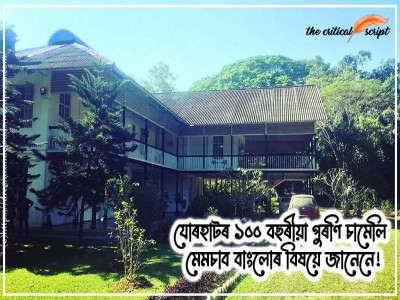
A small glimpse into the History of Jorhat
Like each and every place has its own story to tell, the Jorhat district of Assam has a glorious history to share as well. If we talk about the demography of the district, Jorhat is an administrative district of the Indian state of Assam. It is situated in the central part of the Brahmaputra Valley. The district is bounded by Majuli on the North, the state of Nagaland on the south, Charaideo on the east, and Golaghat on the west.
Interestingly, Majuli, the largest riverine island in the world was under the Jorhat district jurisdiction until it was carved out as a separate district in the year 2016 to become the first island to be made a district in India. Just like Majuli was carved out of the Jorhat district, likewise, Jorhat itself was also carved out of the undivided Sibsagar district in the year 1983.
If we talk about what the name, Jorhat denotes, “Jorhat” or “Jorehaut” means tween “hats” ( Bazar ) or “mandis”- “Macharhat” and “Chowkihat” which existed on the two different banks of the Bhogdoi during the 18th century.
Now let’s dig a little deep into the history of Jorhat. In 1794 the Ahom king GaurinathSingha shifted the Ahom capital from Sibsagar to Jorhat. The town was a flourishing and commercial metropolis but was completely destroyed after a series of Burmese Invasions starting in 1817 till the arrival of the British force in1824 under the stewardship of David Scott and captain Richard.
Though the British rule was not free from revolutions and rebellions, their advent at this very place led to the re-emergence of this historical town. It was during this phase that led to the emergence of the great revolutionists from this land. The revolutionists were GomdharKonwar, JeuramMedhi, and PiyaliBarua. It was during the great Sepoy Mutiny that the anti-British plot hatched by Maniram Dewan and PiyaliBarua was sabotaged. The result was that they were hanged in public at this very place in 1858.
In the year 1881, the Jorhat Union Board for urban development of the town was established and in 1884, the ‘Jorhat Sarbajanik Sabha’ came into existence under the leadership of leader JagannathBarooah.
In the year 1884 under Jorhat Provincial Railway, a narrow gauge train service was introduced for the first time between Jorhat to Gossaigaon. It is said that the introduction of this train service became instrumental in the rapid growth of the tea industry in Jorhat and the region.
In 1904, the first printing press was established and was named ‘Darpan’. The Jorhat Municipality Board was formed in the year 1909. In the year 1913, the first newspaper Assam Bilashini was published in Jorhat. Surprisingly, Jorhat Sahitya Sabha was formed in the year 1915 which is the first recognized unit of Asam Sahitya Sabha (two years before the formation of Asam Sahitya Sabha). The famous Jagannath Boruah College (J.B.College) was established on the 10th of October 1930 and the Assamese daily ‘DainikJanambhumi’ was first published in the year 1972. So this is quite a list. There are also other facts about Jorhat which I would like to share in the coming days
For now, that's all.
Disclaimer: The opinions expressed in this article are those of the author's. They do not purport to reflect the opinions or views of The Critical Script or its editor.

Newsletter!!!
Subscribe to our weekly Newsletter and stay tuned.

















Related Comments